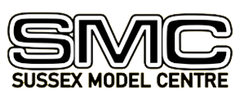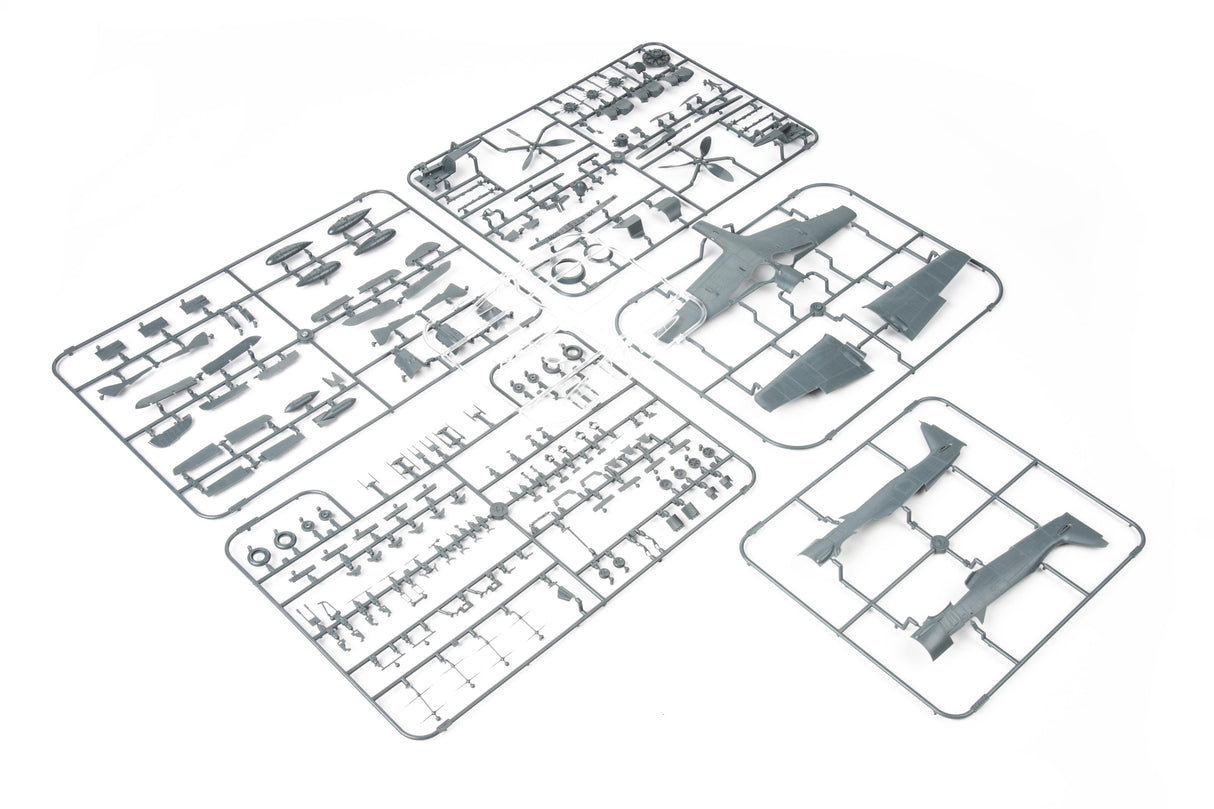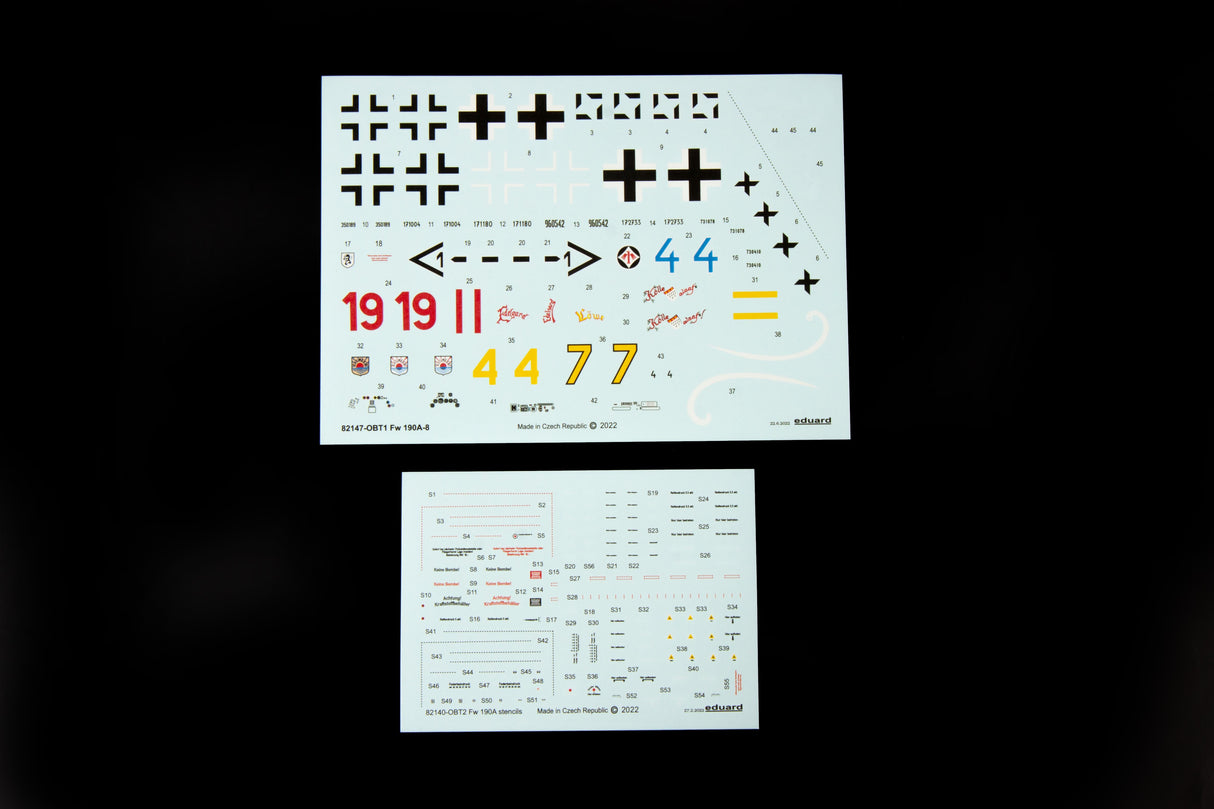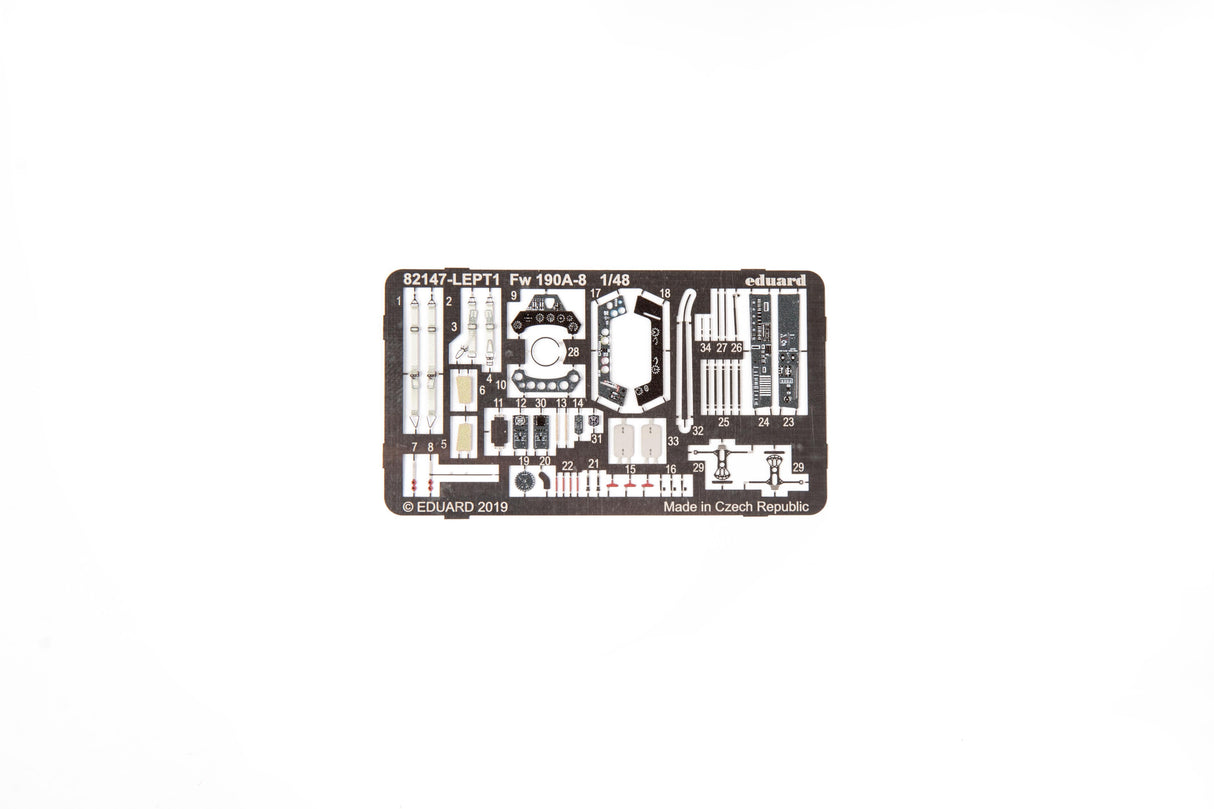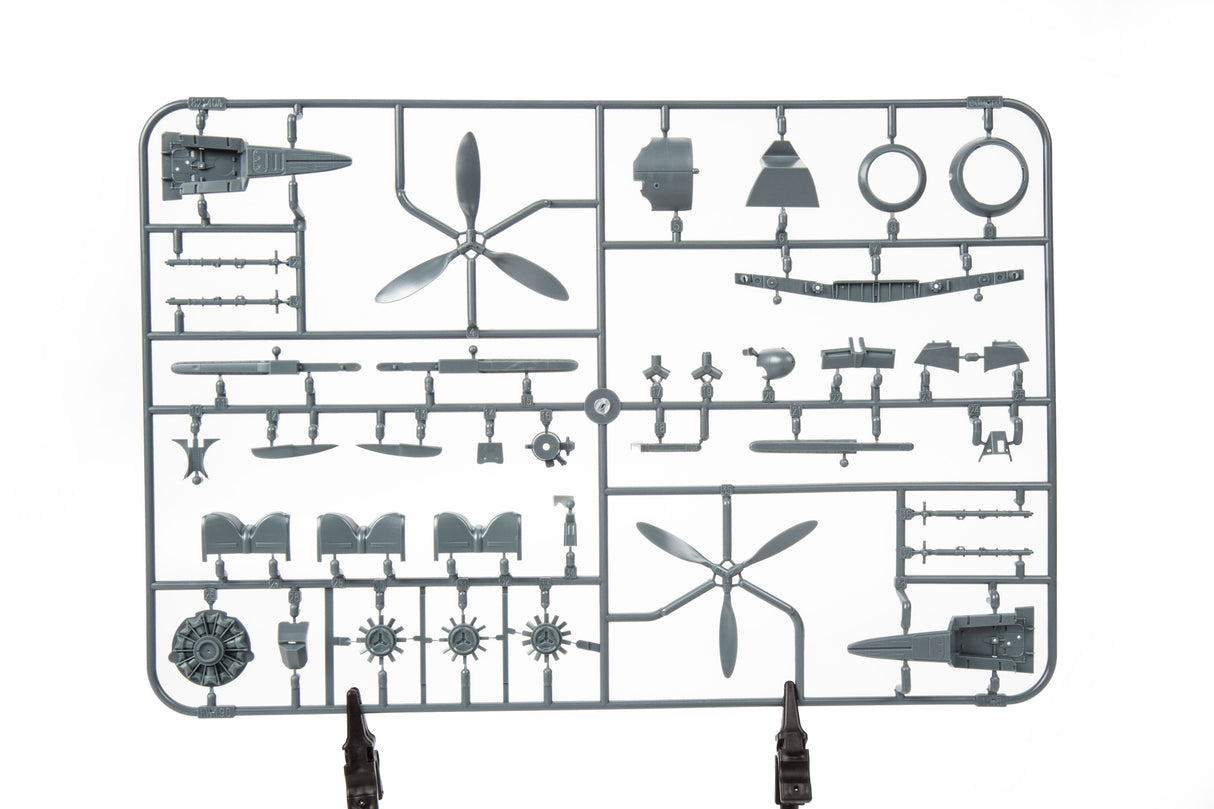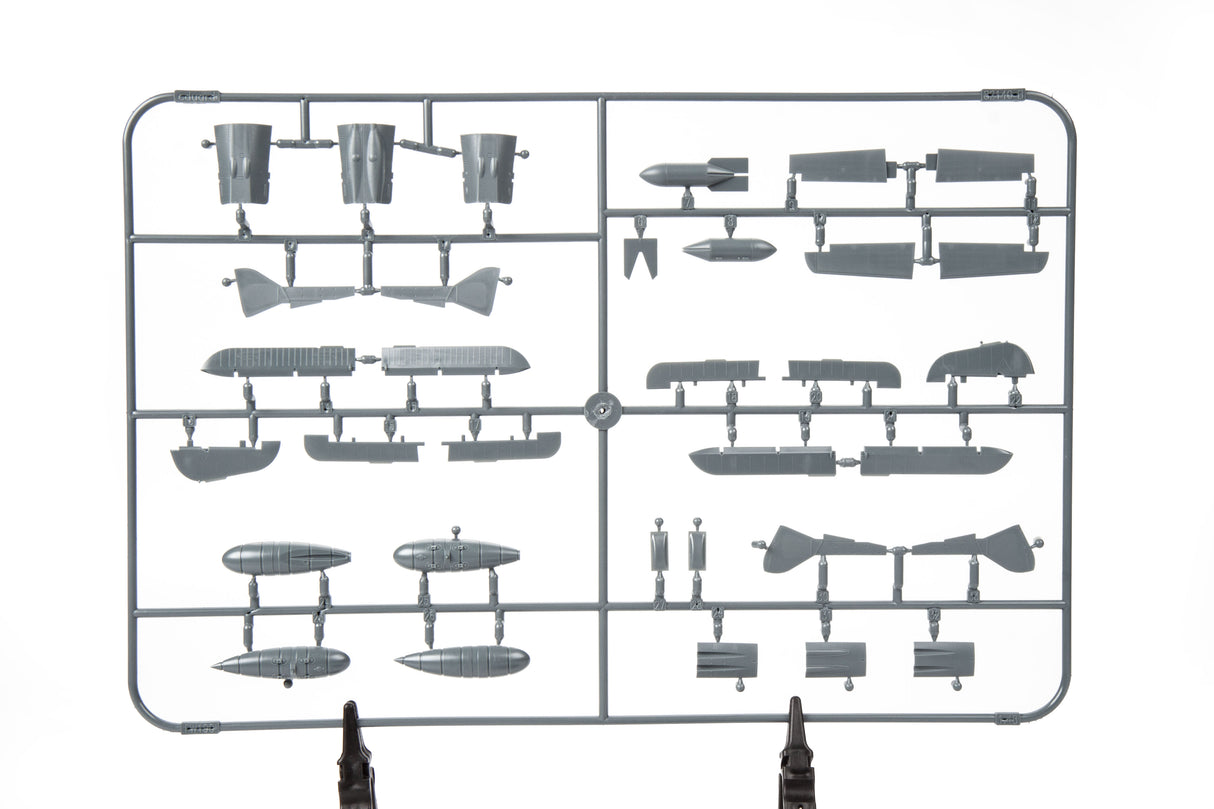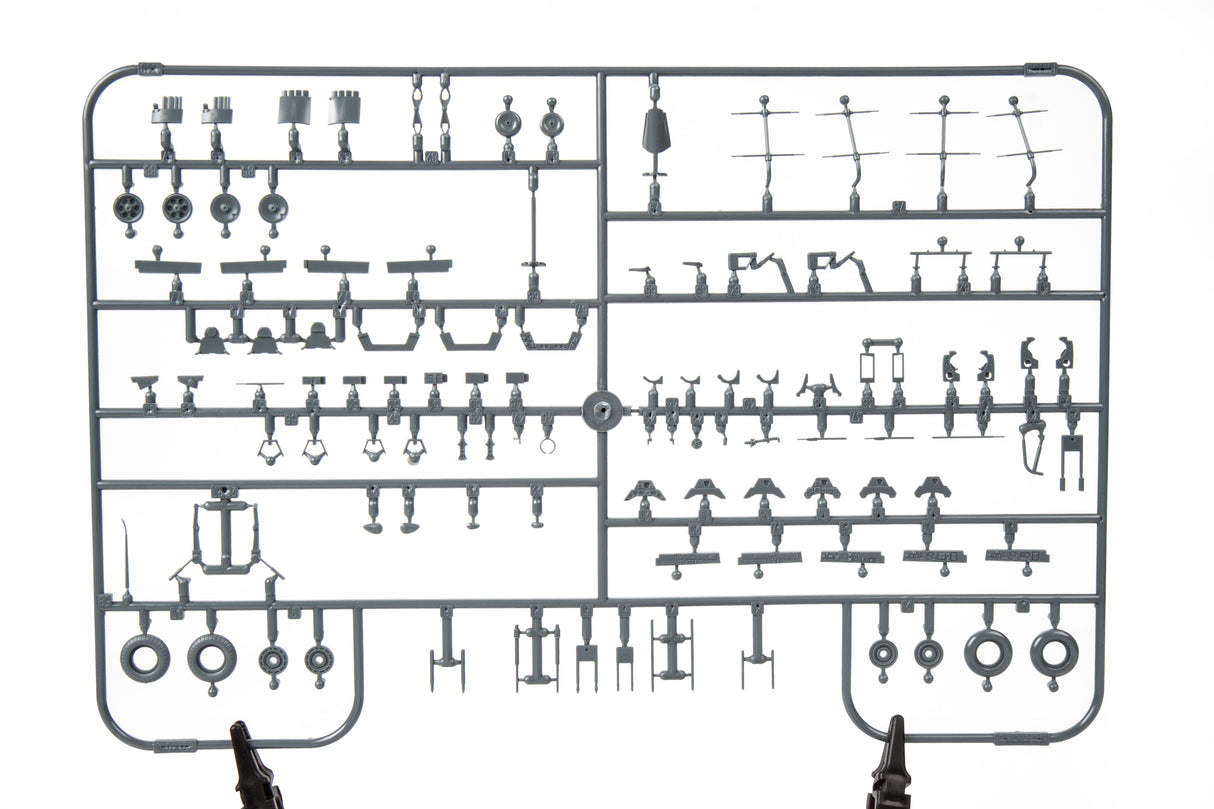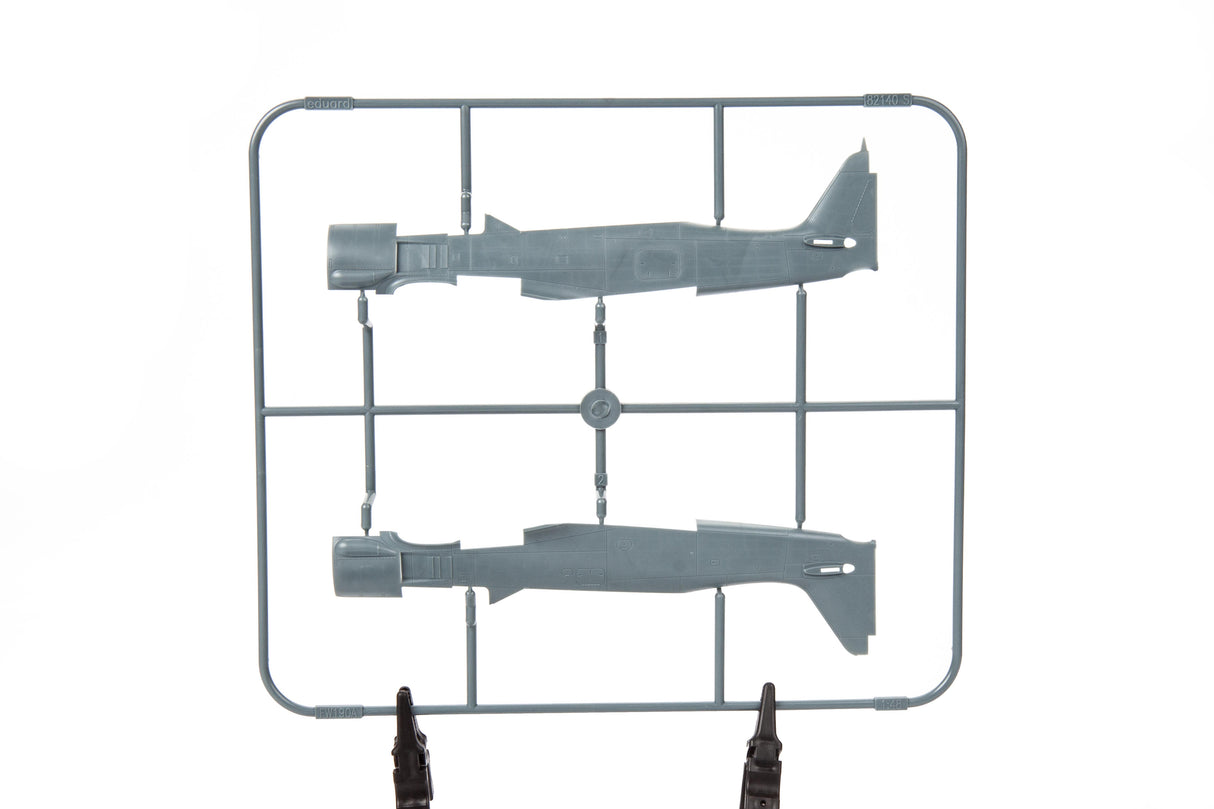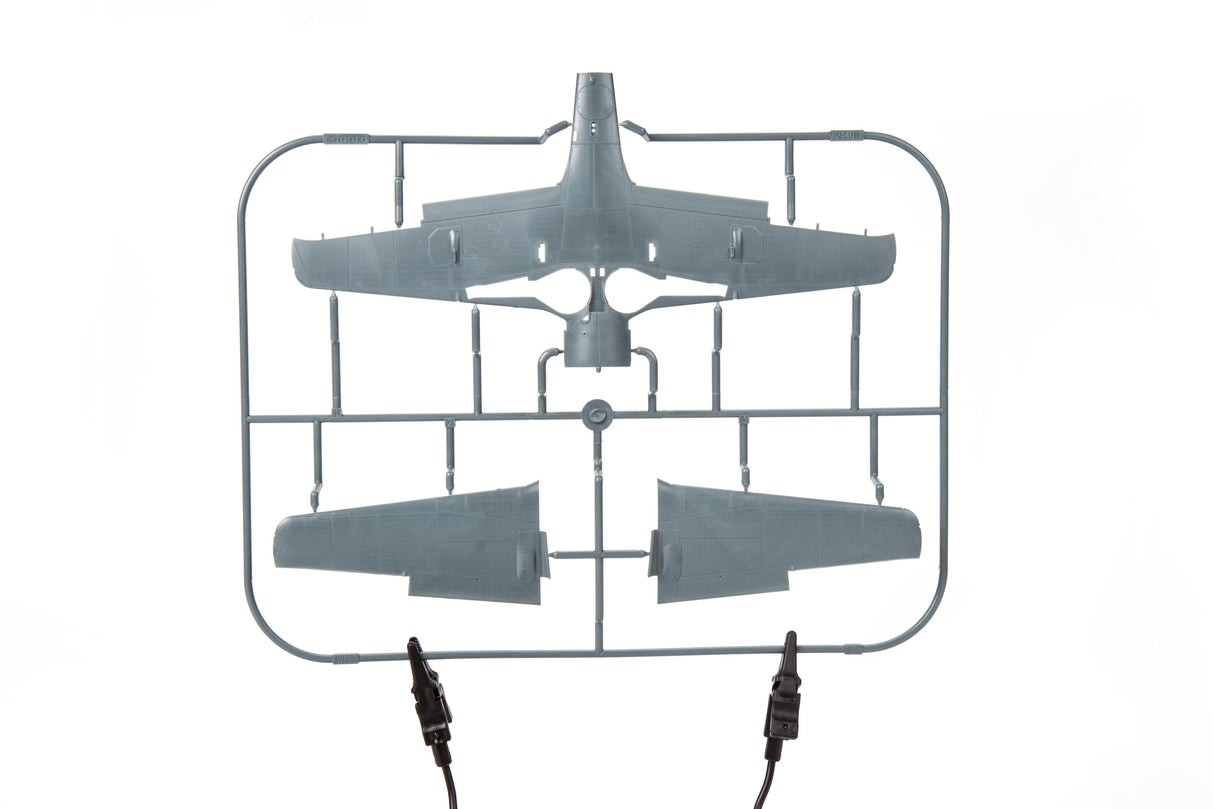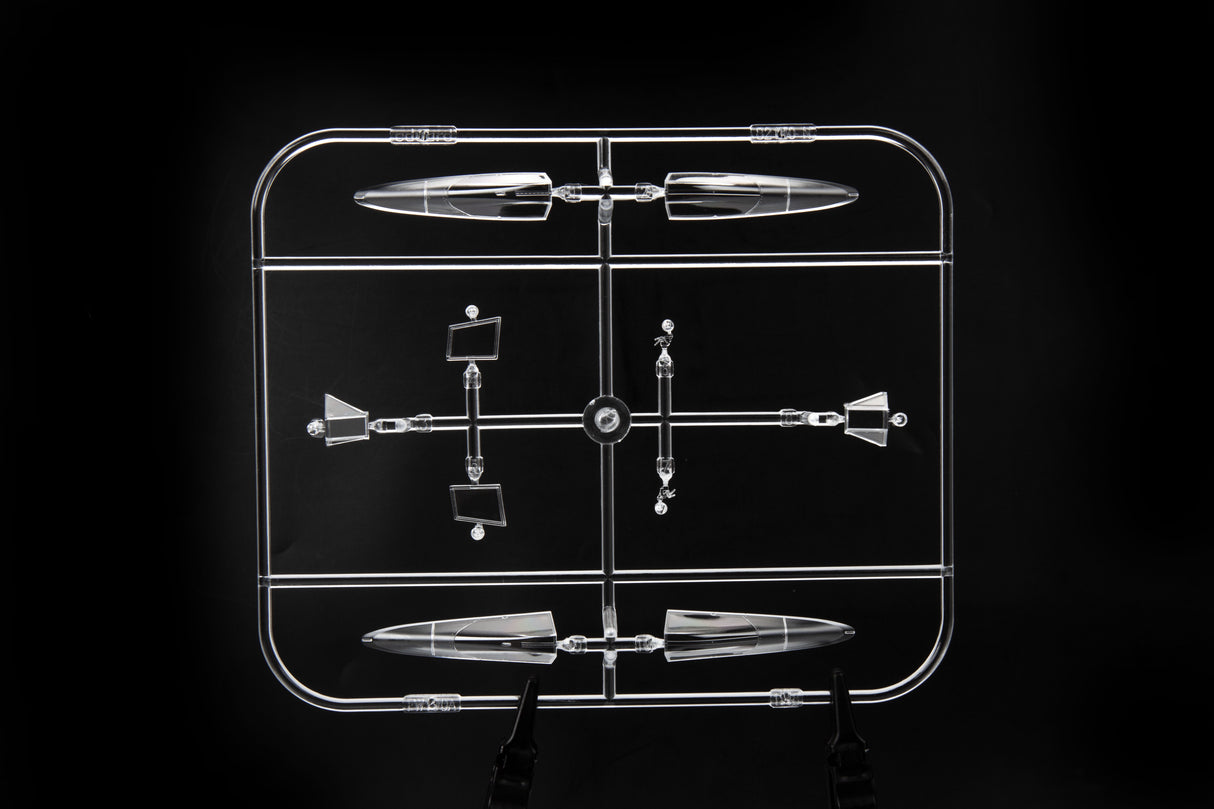Eduard Fw 190A-8 ProfiPACK edition 82147 Kit
Eduard Fw 190A-8 ProfiPACK edition 82147 Kit will be backordered from our supplier. Delivery will take between 3-5 working days & orders will be despatched once completed.
Sign up to be the first to know when this product is back in stock!
Description
Description
The Focke-Wulf Fw-190 is a German, single-engine, full-metal fighter aircraft with a covered cabin in the low wing design of the Second World War. The pilots considered the Fw-190 to be a better aircraft than the Messerschmitt Bf-109. A self-supporting low wing with a working Fw-190 coating was commissioned by the Luftfahrtministerium, assembled in the fall of 1937. Kurt Tank submitted two propulsion proposals - the first with a liquid-cooled Daimler-Benz DB 601 engine, and the second with the new BMW 139 radial engine. The latter was chosen, and the work started in the spring of 1938 was headed by Obering R. Blaser. The first prototype of the Fw-190V1 was ready in May 1939, and it was flown in Bremen on June 1, 1939 by Captain Hans Sander. The second prototype, the FW-190V2, armed with two MG131 and two MG17 machine guns - all 7.92 mm calibre, was flew in October 1939. To reduce aerodynamic drag, both were equipped with a tunnel air inlet in the propeller cap, but problems with overheating of the engine resulted in a return to the proven NACA shield design. Before the tests of these prototypes began for good, the decision was already made to replace the BMW 139 engine with a stronger, but longer and heavier BMW 810. It required many changes, strengthening the structure and moving the cabin back, which later became a source of problems with the center of gravity. The advantage was the removal of problems with exhaust gas permeation and overheating of the cabin interior due to its direct vicinity to the BMW 139 engine. The third and fourth prototypes were abandoned, and the Fw-190V5 with the new engine was completed at the beginning of 1940. Later, it received wings with a wingspan enlarged by one meter (from the original 9.5 m), which made it 10 km / h slower, but it increased the rate of climb and improved manoeuvrability. It was marked Fw-190V5g, and the variant with the shorter wing was Fw-190V5k. The first seven machines of the Fw-190A-0 information series had a short wing, the rest - a longer one. The first operational unit equipped with the Fw-190 - 6./JG 26 stationed at Le Bourget, declared its operational readiness in August 1941 and from the first meeting of the new fighter with the British Supermarine Spitfire, its advantage over them became apparent. During the war, a dozen or so versions of this great plane were created. The machines of the "A" version, along with a dozen or so modernizations, served as fighter planes. The versions marked "B" and "C" were only prototypes of high-altitude fighters intended for fighting strategic bombers, but they did not enter into serial production. The "D" variant, as the only one of the Fw-190s, was powered by the new 1750HP Jumo 213A engine and was the German response to the P-51 Mustang. The new engine extended the fuselage by several dozen centimetres. This variant also performed mainly hunting and high-altitude fighter tasks. Numerous variants of the "F" version were used as fighter-bombers as direct support of the battlefield. The "G" version played the same role as the "F" version, but had a greater range. During the entire war, over 20,000 copies of this one of the best fighters of World War II were produced. Technical data (version Fw-190A-8): length: 9m, wingspan: 10.51m, height: 3.95m, maximum speed: 656km / h, rate of climb: 15m / s, maximum range: 800km, maximum ceiling 11410m , armament: fixed-2 MG131 13mm machine guns and 4 MG151 20mm cannons (2 MG 151 / 20E cannons for the D-9 version).
Additional items are required to complete kit as illustrated
Specifications
Specifications
Payment & Security
Payment methods
Your payment information is processed securely. We do not store credit card details nor have access to your credit card information.
